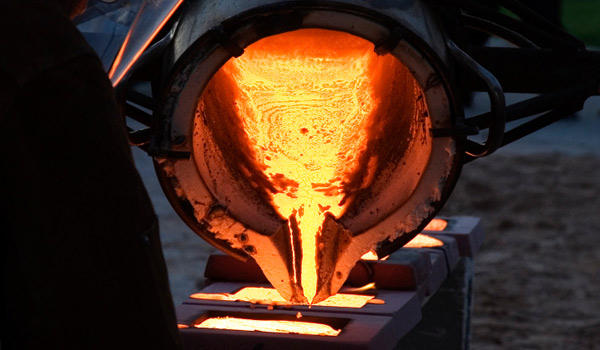
Metal Casting
Metal Casting can be addressed as the oldest manufacturing processes dating back nearly 6000 years. Theoretically, casting can be said filling a mold with molten material. This molten material upon solidification takes shape of the mold. Thus, within a single step, any kind of shape can be made from the molted metal as per the requirement. The resultant of the molten material can have virtually any configuration as per the designer’s desire. Casting also helps optimize the resistance to working stresses as well as helps in controlling directional properties thereby achieving a pleasing appearance.
The current casting process can be divided greatly into two major categories: expendable and non-expendable casting.
- Expendable Mold Casting: It is a generic classification involving temporary non-reusable molds. These molds can be made of sand, plaster, shell, plastic moldings.
- Permanent Mold Casting: This type of metal casting uses reusable molds or permanent molds made mostly from metals. Most commonly, gravity is used to pour the molten material. However, even gas pressure and vacuum can also be used. A common variation of the typical gravity casting produces hollow casting, known as slush casting. Commonly, permanent molds are made of metals such as aluminum, copper and magnesium alloys. These permanent molds however, have to replaced once they wear out.
In today’s era, it is next to impossible to design anything that cannot be casted by one or the other available casting processes. The success of the casting however depends on the fact that how well the designer understands the various options and accordingly, modifies the design aptly to suit his requirement. The selection of mold-material is also essential as it should be able to withstand the hot metal, while being workable enough to be carved into a mold. On basis of mold-material, casting can be divided into sand, metal and on basis of pouring method into gravity, vacuum, pressure. The basic fundamental of working of all the processes are same, helping achieve maximum properties during solidification and avoiding any defects due to shrinkage voids, trapped inclusions and gas porosity.
In certain cases casting, can be the made into same shape as final product, being single step. In complex operations, casting can be the initial process in the manufacturing of multi-processes manufactured part. The size of resultant casting product can be as small as fractions of inches or ounces(such as teeth or zipper) or can be feet in length and tones in weight(such as huge propellers and stern frames of ocean liners).
Casting can help manufacture complex shapes having hollow sections as well as internal cavities. It can help produce irregular curved surfaces, huge parts as well parts which are impossible to be machined from metals. All these advantages make casting one of the most common and most essential manufacturing process.
Even after careful influence of casting parameters and meticulous understanding of casting technique for controlling material properties, the most common disadvantage of metal casting it that the resultant product tends to have more flaws and lesser strength and ductility as compared to other manufacturing processes like metal forming.
This entry was posted on Wednesday, November 19th, 2014 at 9:04 pm and is belong to category Blog.




